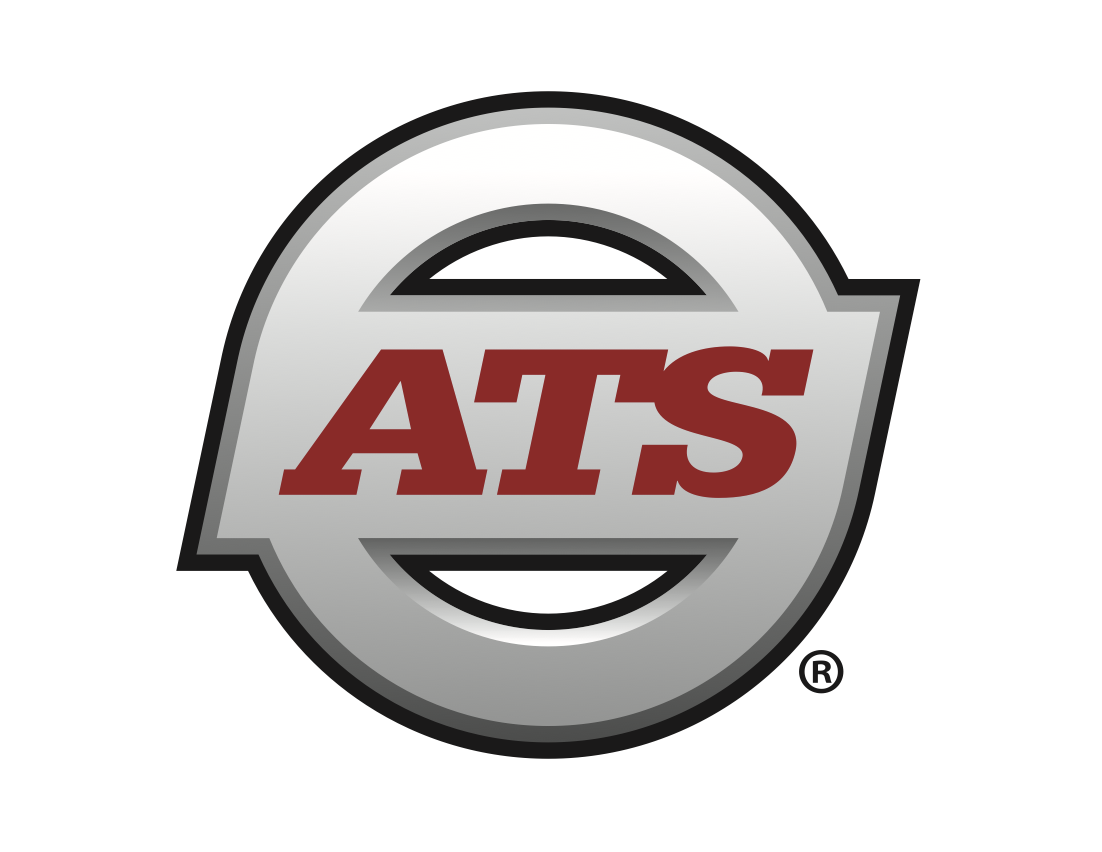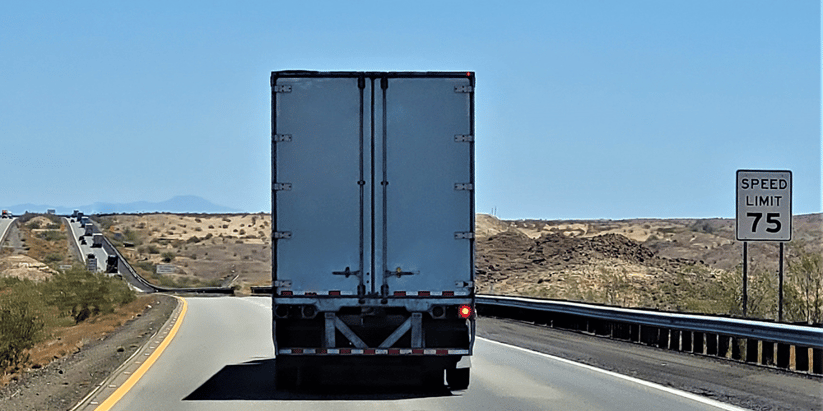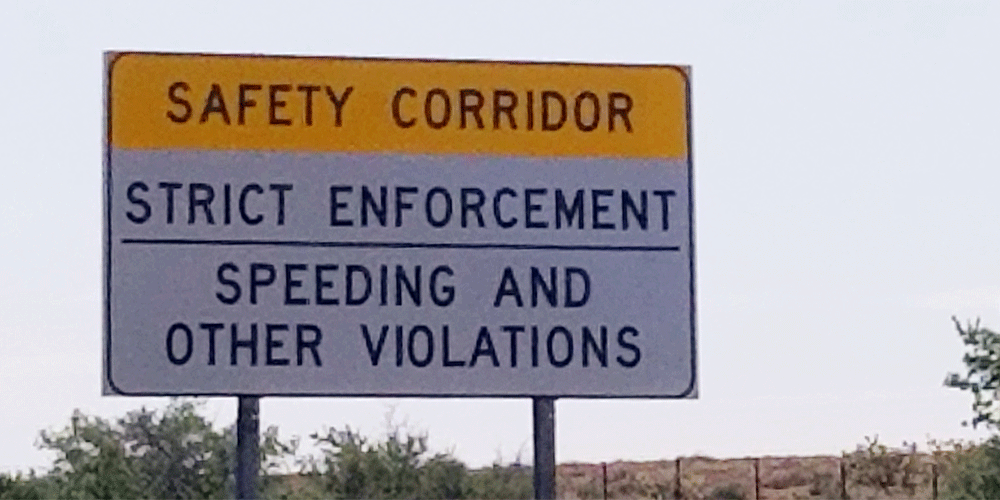There’s a reason they say slow and steady wins the race. And they weren’t wrong when they said it.
The idea that going faster will get you there faster isn’t necessarily true. If you bump up your speed by just a few miles per hour, studies show that you’ll maybe save yourself only a handful of minutes. A handful.
So is speeding worth it? Is a ticket worth it? Are points against your Compliance, Safety and Accountability (CSA) score worth it?
Probably not, but more on that later.
If you’re like many drivers out there, you don’t like speed governors (or vehicle speed limiters). There are countless misconceptions about speed limiters. Maybe you think a speed limiter will make you get to your destination much slower. Maybe you think that you’ll congest traffic by driving slower with a speed limiter.
But the truth is, everyone who drives a vehicle has their speed limited in one way or the other — whether it’s by the car manufacturer that only lets you go up to 80 or a trucking carrier that governs your speed at 65. Speed governors not only promote safety and save lives, but they also save you money.
Understanding how they work and why they’re on your truck is crucial to helping you appreciate their role in keeping you safe while you save money on fuel.
Here at Anderson Trucking Service (ATS), we have a large team dedicated to maintaining the safety of the fleet of drivers, the motoring public and the freight we haul. We’ve extensively studied the connection between increased speeds and accidents, as well as high speeds and increased fuel consumption through the years, and we’re always looking for new, cutting edge ways to keep our drivers safe and compliant with regulations.
When you’re done reading this article, you’ll understand how truck governors work, why they’re so important, how they keep you safe and how they can save you money. You’ll no longer feel the need to exceed speed limits to make it to your destination only a few minutes quicker.
How Do Speed Limiters Work in My Semi?
A vehicle speed limiter (VSL) governs your speed. Specifically, they don’t allow your vehicle to go above a certain speed. The engine and transmission may be capable of going much faster, but the speed is limited for specific reasons.
Even if you put your pedal through the floor, the device inside your engine will not let you go above a specific speed.
There are several different varieties of governors used in semi-trucks, including mechanical governors, power-assisted style governors, hydraulic style governors, pneumatic governors and electronic governors. Each works a little bit differently to control engine speed.
There are also two categories of governors: speed limiting and range governors. Most trucking companies that lease their trucks or provide them to company drivers have speed limiting governors on their trucks, not range governors. Speed limiting governors prevent the truck driver from pushing the vehicle past a certain speed. Range governors prevent the engine from going past certain engine speeds.
More often than not, trucking companies nowadays utilize electronic governors that are wired to the control box or electronic control module (ECM). They can only be modified with specialized computer equipment, making it next-to-impossible for drivers to tamper with them.
Governors on the ECM receive a signal from the transmission differential or wheel speed sensors. Pulses to the fuel injectors or ignition are shut off until the speed is lowered to an appropriate speed.
Most major trucking carriers have VSLs in their trucks, but they don’t all govern their trucks at the same speed. Some trucks are governed at 65, some at 68, some at 70 and so on.
When you are going down hills, gravity and the weight of your freight can cause you to go above the speed your VSL allows. In that case, some companies have automatically activated exhaust brakes. As your speed rises, the pistons are activated two at a time until your speed is slowed to an appropriate level.
Why Do Trucking Carriers Use Speed Governors?
All major carriers govern their trucks using a speed limiter. You’ll be hard-pressed to find a carrier that doesn’t.
The reason the trucking industry initially saw a need for speed limiters was to help control emissions. However, there are other reasons why speed limiters are used today. Not only can they help control emissions, but they also promote safety and help drivers and companies save on fuel costs.
Controls Emissions and Limits Pollution
The United States Environmental Protection Agency (EPA) has set forth emission standards for on-road and nonroad vehicles and engines. To regulate emissions, the EPA sets standards for specific pollutants that are emitted, including carbon monoxide, hydrocarbons, nitrogen oxides and particulate matter. Therefore, the amount of pollution a semi-truck can emit is regulated by the EPA.
Manufacturers must meet the standards the EPA puts forth, and they must do so in the proper timeframe. In the last several decades, the EPA has been limiting truck emissions, which caused engine manufacturers to make major changes. Year by year, trucking companies have been required to get their emissions down on each truck in their fleet.
Once major changes had been made to the engine to cut down on emissions, manufacturers began to look at how they could gear trucks to lower RPMs but maintain speed. Emissions are too high when RPMs are high. Lower RPMs equals lower emissions. Therefore, speed limiters were put on truck engines so that drivers can keep their emissions low.
Trucking companies must focus on balancing performance and fuel economy. When you drive at a slower, steadier speed with a speed limiter, you burn less fuel. Hence, you produce less carbon dioxide and other harmful emissions.
Lowers Fuel Costs
Driving faster burns more fuel. The harder your vehicle needs to work, the more fuel you burn. By limiting how fast you can drive, a speed limiter can help lower your fuel costs.
When you slam your foot down on the pedal and see those RPMs jump, you can also kiss your fuel efficiency goodbye. On the other hand, when you apply steady pressure on the pedal and take your time getting up to speed, you’ll be conserving your fuel. The higher your RPMs, the more fuel you’re burning.
Trucking companies gear their trucks to operate in the optimal zone for torque and horsepower while maintaining a governed speed. Going above recommended RPMs will not only cause you to lose torque and horsepower so that your engine is not performing optimally, but it will cause you to burn fuel faster.
When you keep it in the optimal range for horsepower and torque — somewhere between 900 and 15,000 RPMs — your engine performs optimally and you improve your fuel efficiency.
We crunched the numbers and compared two drivers who averaged slightly different speeds.
Driver 1 averaged speeds of just 2.5 MPH faster than Driver 2. Driver 2 ended up spending $90,000 more on fuel in one year compared to the slower-driving Driver 2! Even just a 1 MPH difference can be a difference of $30,000. That’s a lot of money to be playing around with.
A speed governor plays an important role in lowering fuel costs by keeping your speeds in an optimal range.
Your fuel economy tanks when you drive faster. As an independent contractor or owner-operator without a speed governor, you may struggle to be profitable because you’re spending so much money on fuel. With rising fuel costs, driving efficiently is more important than ever.
Maintains Driver Safety and Decreases Accidents
One of the primary benefits of speed limiters is safety. With reduced speed, the chances of an accident occurring lessen.
Numerous reports reveal that the primary cause of most fatal crashes is speed. Therefore, limiting speed decreases your chance of being involved in a fatal accident.
A study from the Federal Motor Carrier Safety Administration (FMCSA) showed that trucks with speed limiters have a 50 percent lower crash rate compared to trucks without them.
Driving a slower, safe speed with a limiter and maintaining a six-vehicle following distance allows you the freedom to see what is far ahead of you. It gives you time to slow down if there’s an accident in front of you.
When combined with accident mitigation technology, speed limiters can help prevent or lessen the severity of accidents altogether.
Compliance With Insurance Requirements
Some insurance companies require trucking companies to have speed limiters on their fleet. This is for safety purposes.
Why Don’t Drivers Like Speed Limiters?
There are several common reasons why truck drivers don’t like when their speed is governed.
Increased Stress
There is the perception that not only will you not get to your destination as quickly when your speed is limited, but you will also be more stressed to deliver loads on time.
Drivers may feel frustrated by VSLs and may make poor driving decisions because of that. They may feel like they’re facing a major loss because it takes longer to deliver freight and customers want a faster delivery.
This can lead to a lot of increased stress and pressure on drivers to meet tight deadlines or find ways to make up for lost time during their journey in other ways. This stress can make it harder for a driver to complete their job safely.
At ATS, we did a study a few years ago where we compared the speeds of someone going a few MPH faster than another driver as they drove the same distance. The difference? 13 minutes.
Many drivers think the difference between going 65 versus 70 all day is at least an hour difference, but it’s simply not true. And it’s not worth the risk.
Leaving a little earlier in the morning or taking the time to plan your routes ahead of time can take care of this stress.
Compromised Safety
There is the misconception that safety is compromised when driving slower speeds, or the idea that drivers will cause traffic congestion — especially if all trucking companies govern their trucks at similar speeds.
Because of this driver concern, some companies utilize a feature called PasSmart. The feature allows drivers a specific amount of time during the day to go over the usual speed limiter speed limit. For instance, if your truck is governed at 65, your truck will be able to go 67 for ten minutes each day.
The carriers who utilize PasSmart set up different speed and time allotments, but the idea behind it is to allow drivers to pass other cars to avoid backing up traffic. Some drivers believe that limiters don’t allow them to safely switch lanes because they can’t complete specific driving maneuvers fast enough, but the PasSmart allows them to.
Maintain Safety on the Road and Maximize Your Income
Remember, even if you’re the first truck to the hill when everyone starts driving at the same time, that doesn’t really mean you’re the winner. You’re probably the loser because your fuel bill will be a lot higher. (Believe us, we’ve done the math on this many times over through the years.)
There are both pros and cons of speed limiters, but it’s essential to understand that driver safety and road safety is the most important thing at the end of the day. Even though profitability and meeting deadlines are crucial, what needs to be top-of-mind is the integrity of you, the driver.
A speed limiter will not only help you lower your fuel emissions and maintain safety on the road, but it can also help you lower your fuel costs.
Here at ATS, we understand how important it is to you to save money and increase your income. That’s why we’ve put together this article featuring nine ways you can increase your truck driver salary and maximize your income.




